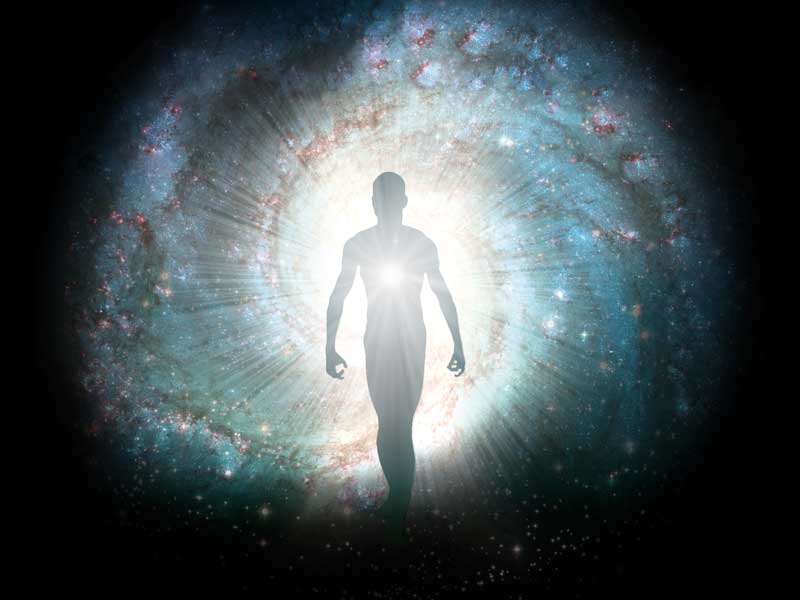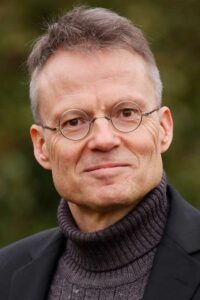New ways to Enlightenment
Author: Prof. Dr. Markolf Niemz
The physicist Prof. Dr. Niemz shows on the basis of three comprehensible examples how scientific knowledge and spiritual inspirations mutually fertilize each other. Both support humans to explore the connections of the inner and outer cosmos and possibly to understand them a little better. A plea for the connection of science and spirituality.
Again and again I am asked what moves me as a physicist to write spiritual books. The answer summarized in one sentence:
Natural science and spirituality are not mutually exclusive. On the contrary – they advance each other.
I would like to explain this in this article using three examples: the theory of evolution by Charles Darwin, the quantum theory co-written by Werner Heisenberg, and the process philosophy of Alfred North Whitehead.
THEORY OF EVOLUTION – SCIENCE
With the help of Darwin’s theory of evolution, we are now able to solve an ancient philosophical puzzle:
Which came first? The chicken or the egg?

In fact, however, there is a solution, and that solution is amazingly simple once you get the hang of it. It’s rather this: there is no such thing as the chicken or the egg. Chickens of today are genetically different from those that lived a hundred or even a million years ago. The same is true for eggs. Chickens and eggs evolve with each generation. That’s why, in my new book Seeing the World with Different Eyes, (Gütersloher publishing house), I suggest talking about the verb forms “chickening” and “egging.” Our nouns have a big disadvantage – they disguise that life unfolds!
QUANTUM THEORY – SCIENCE
I would like to limit myself in this contribution to the spiritual component of the quantum theory. A prominent example is a thought experiment by Werner Heisenberg. The goal is to measure exactly the location of a particle. To do this, Heisenberg places it under a microscope. To be able to see it, he switches on a lamp. But now the light transfers part of its energy to the particle and thus sets it in motion unintentionally. The mere attempt to observe the particle forces it to change its location. Of course, the reverse effect also takes place: Observing continuously changes Heisenberg’s brain; new cell connections are formed that store what he observes in his memory.

What do we learn from this? There really are no passive objects in the cosmos; everything interacts with its environment. Consequently, uninvolved spectators – as are in classical physics – no longer exist. Hence everything is connected with everything else. The cosmos and every living being in it are an indivisible, continuously unfolding process.
But not only our knowledge changes permanently as long as we live, but our body as well. Almost all of our cells renew themselves every few years without us noticing. So basically I am not a who at all, but a process, a verb form – a “humaning”. What we learned earlier about chickens and eggs also applies to us humans, because we too are part of the evolution of life. Unfortunately, we are too often the victims of our own languages, which focus on nouns and know only the words “chicken” and “egg” and “human,” but neither “chickening” (which is only known in a very different meaning than chicken) nor “egging” let alone “humaning.”
PHILOSOPHY OF ORGANISM – SCIENCE
A great philosopher once formulated his own theory from what we have just recognized. Unfortunately, many of us do not even know his name: Alfred North Whitehead.
Whitehead’s theory is often called “process philosophy,” but this term obscures its most important feature: aliveness. Whitehead himself speaks of a philosophy of organism. Indeed, he conceives the unique qualities of an organism – experiences – as basic building blocks of the cosmos. Whitehead does not call them elementary particles, but drops of experience. “Objects” such as people, animals, plants, sand, or atoms did not exist in themselves. In fact, verbs would first create and form what we call “objects”.
Everything is relational, that is, it exists only in a felt relation to everything else.
According to this, also every electron can feel: By “feeling” an electromagnetic field in the atom, it is directed to its orbit. Only “feeling” makes it an electron.
About the author

Prof. Dr. Markolf H. Niemz is a physicist and holds a chair in medical technology at the Mannheim Medical Faculty of the University of Heidelberg. For his research on laser medicine he got the Karl Freudenberg Prize by the Heidelberg Academy of Sciences in 1995. Niemz studied physics and bioengineering in Frankfurt a. M., Heidelberg and San Diego. He was a Research Fellow at Harvard Medical School with a grant from the German Research Foundation. His books are spiritual bestsellers and animate the dialogue between natural science and religion.
Image credit: © Adobe Photostock
This article was published originally on the German Homepage of Tattva Viveka: Das Markenzeichen von Spiritualität




